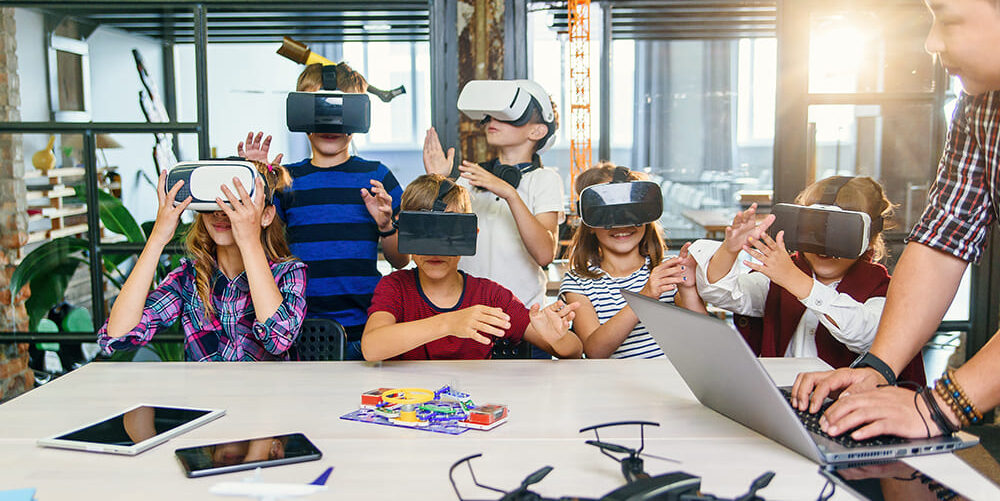Defining Augmented Reality
Firstly, to realise the impending impact of Augmented Reality (AR) within education, it’s essential to define the concept of AR. ‘Augmented Reality is an enhanced version of the important physical world that’s achieved through the utilization of digital visual elements, sound, or other sensory stimuli delivered via technology.’ One of the pre-empted objectives of AR is to focus on precise features of the world we know, in order to provide an understanding of these features and ‘derive smart and accessible insight that will be applied to real-world applications.’ Therefore, exemplifying the transferrable benefits of Augmented Reality implementation within education, providing learners with an educational environment that makes use of both virtual and illustrative methods. This diversification in education delivery can enhance the recall of information amongst learners.
Augmented Reality in Education
Through the deployment of AR in classroom education, teaching can become increasingly interactive, with the aim of boosting the level of attentiveness among learners. This can be achieved through the employment of virtual models of concepts and gamification of existing learning resources, to supply textbook material support.
AR Related Education Statistics
* According to statistics1, about 80% per cent of scholars are more likely to attend an AR-based class.
* 70% of those students claimed that AR has improved their learning experiences and escalated their pace of getting a grasp on the topic.
* 54% of teachers want an increased presence of augmented reality solutions within the classroom2
Benefits of AR within Education
Augmented Reality can enable a swift and effective learning environment that facilitates the learning through rich visuals and immersion into the topic matter, allowing students to effortlessly understand and simplify concepts.
AR also provides immediate accessibility to teaching materials, with Augmented Reality having the potential to replace textbooks entirely, providing mobile learning that’s always available, can be routinely updated and making the resources be cost-effective for the individual.
Learners will benefit from the increased engagement and heightened interest within the material through the application of AR. This is because learning can become more interesting, fun and collaborative through the power of Augmented Reality, which will lead to learners to having an overall more positive attitude towards education.
As AR content is digital, it can be effortlessly distributed and be employed to improve collaboration among learners. A collaborative learning environment provides learners with increased motivation to engage within education.
The learning process will also be benefited from sensory development, with AR technology helping ‘teachers to form multisensory lesson plan experiences.’ Learners will also have access to the benefit of immersive virtual content that includes an experiential learning style, in which students can complete physical activities rather than watching an illustration.
Within the AR4EFL project we are aiming to create a realistic learning environment for learners of a second language as a means to motivate them to learn. We also seek to design, test and publish an innovative educational package based on AR technology for primary school teachers that will guide and support their English (or any other) as second language teaching. As well as providing quality training to primary school teachers on how to utilise the innovative educational package in in traditional or virtual/online classroom.
For more information please visit our website: https://ar4efl.eu/
And follow us on Facebook: https://www.facebook.com/AR4EFL

